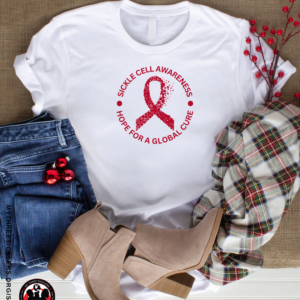
Tynicia Sanders (left) has sickle cell disease. Her son Christian, and daughters Dynver and Taylor, all have sickle cell trait.
Q: Sickle cell disease runs in my family. I don’t have it, but my friend told me I can still pass it on to my children. Is this true? I don’t have kids yet, but I want to be a mom someday.
– Raiyah*
If you have sickle cell disease in your family, your children might be born with it — but they also might not. It all depends on the mix of genes that your kids inherit from you and their father.
Sickle cell disease is genetic — it’s passed down from parents to children. People who inherit one sickle cell gene and one normal gene have sickle cell trait (SCT). People with the trait usually do not have any of the symptoms of sickle cell disease, but they can pass the disease on to their children.
Your doctor’s office can do an easy blood test to find out if you have sickle cell trait. If the test shows you have the gene in your body, it means that you could pass it on to your children.
Of course, children inherit genes from both parents. So your kids’ dad will play a role in sickle cell disease:
- WHEN BOTH PARENTS HAVE THE TRAIT
- 25% chance child will have neither disease nor trait.
- 25% chance child will have sickle cell disease.
- 50% chance child will have sickle cell trait.
- WHEN ONE PARENT HAS THE TRAIT & ONE HAS THE DISEASE
- 50% chance child will have sickle cell disease.
- 50% chance child will have sickle cell trait.
- WHEN ONE PARENT HAS SICKLE CELL DISEASE & ONE HAS NEITHER THE DISEASE NOR TRAIT
- All children will only have sickle cell trait.
- WHEN BOTH PARENTS HAVE SICKLE CELL DISEASE
- All children will have sickle cell disease.
Some other blood disorders are similar to sickle cell disease, like hemoglobin S-C, C, and E, and thalassemias. When a parent has one of these, it also can affect a child’s chances of being born with sickle cell trait or sickle cell disease.
SOURCE (not including bulleted breakdown)









